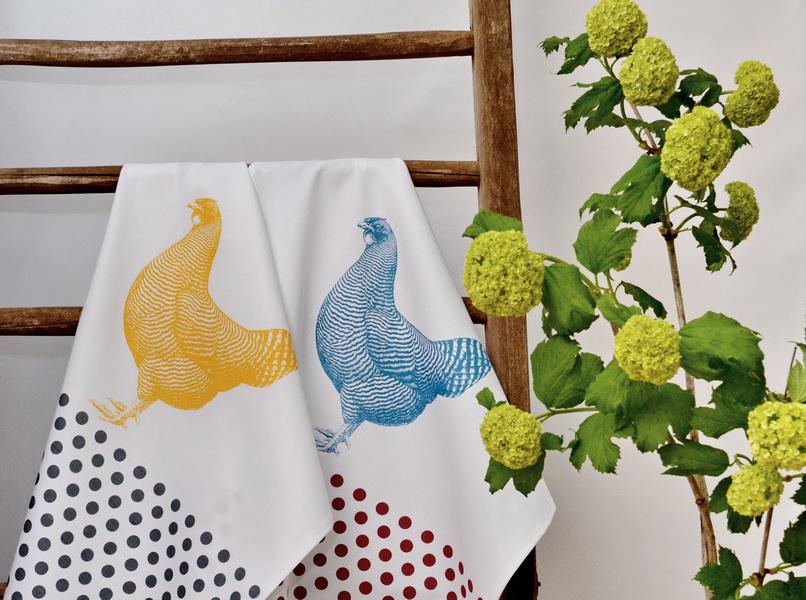
Whether it be dishcloths with the image of a speckled hen, boastful peonies on table runners, or fish on aprons - Jagababa from the village of Lobček near Grosuplje revives the country spirit in a very chic way.
Several times a day consumers are bombarded with the fairy tales of foreign chain stores saying how we should “buy Slovenian”. But at the same time we don’t really know what we’re buying: the product itself, a sense of national belonging, or a reminiscence of a life which until not that long ago had the fragrance of familiar places.
"All too often only the accordion, folk costumes, sausages and potica cakes are regarded as being Slovene. No way! We also have to include the folk common sense. To know what to grow in your garden; to know how to build a house. It’s all the functional daily things which make life easier. And we tend to forget that more and more," says Saša Drobnič Škrjanec, the one behind the creativeness of Jagababa.
She first designed only shawls and skirts. Today she mostly designs products for the home. The products of her brand, with images of fat chickens or wonderful flowers, take us to the gardens of our grandmothers. The fact that her motifs are made with a screen printing technique on textile made from 100% cotton or linen is not to be overlooked.
She initially started with the dishcloth and then new ideas quickly started to spread on aprons, table runners, bread baskets, and now even on wooden deck chairs. Saša makes and also uses the products herself in her workshop behind her house in the middle of the Dolenjska village of Lobček near Grosuplje, where she says "the cherry tree has shed its blossoms and we all eagerly await the first cherries." She is usually aided in her work by a seamstress. Her husband Mitja, otherwise an architect from Kranj, is also actively involved in the work, as common for both is the nostalgia for grandmother’s old house and chest. "We took a look to see what our grandmothers had planted in the gardens and we found Madonna lilies, which were used for table bouquets or graveside flowers. That’s why we used the flower pattern on dishcloths."

































































